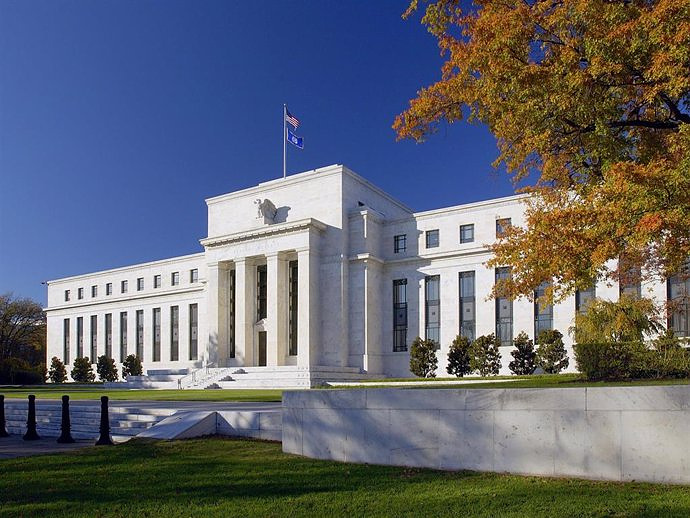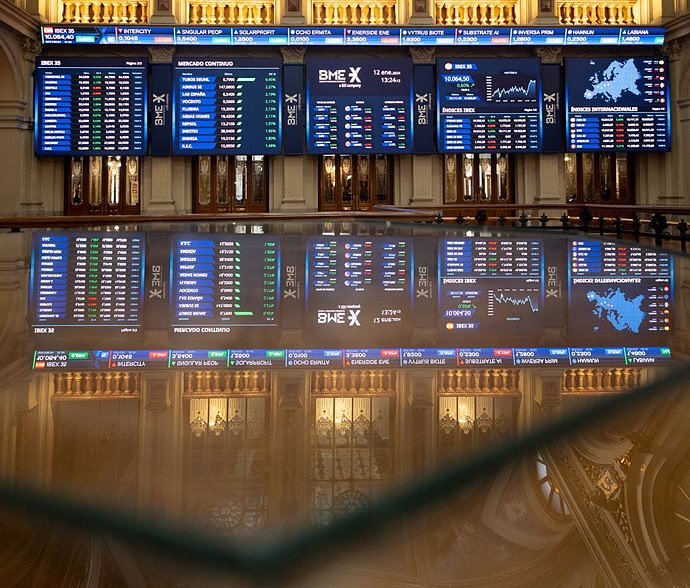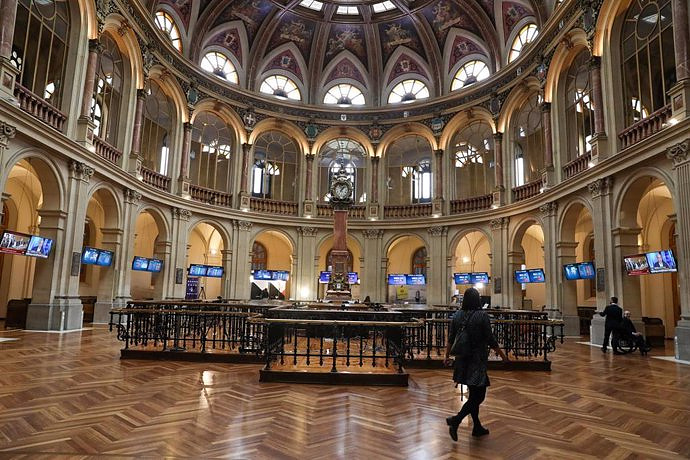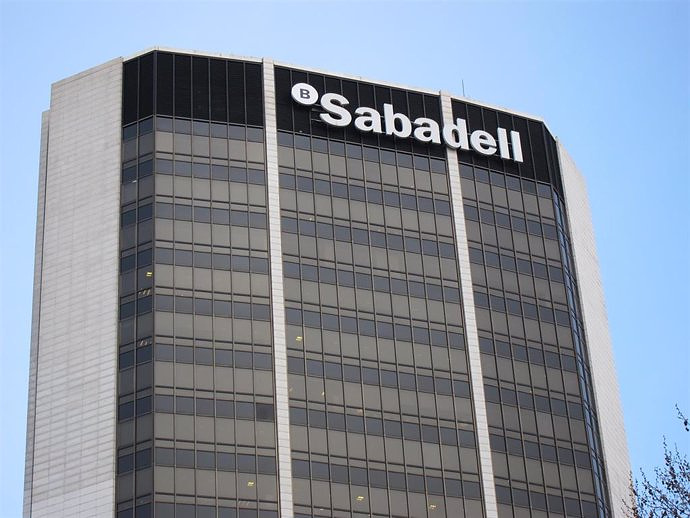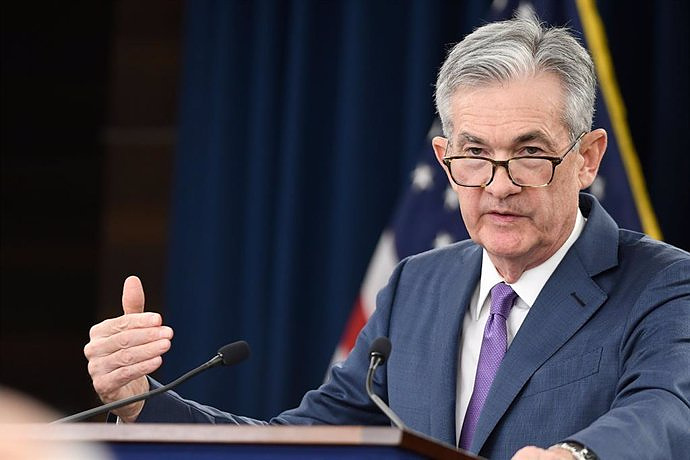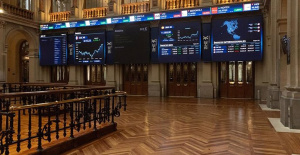The Federal Open Market Committee (FOMC) of the United States Federal Reserve (Fed) has decided to maintain interest rates in the target range of between 5.25% and 5.5%, at highest levels since January 2001, as reported by the central bank in a statement this Wednesday.
In this way, the institution has once again maintained its monetary policy unchanged for the fifth consecutive meeting after the last increase of 25 basis points in the price of money carried out last July and the pause that began in September.
"When considering any adjustment to the target range of the federal funds rate, the Committee will carefully evaluate the incoming data, the evolution of the outlook and the balance of risks," said the central bank, which has described the macroeconomic picture as "uncertain."
Likewise, the decision-making body has indicated that it "does not expect it to be appropriate to reduce the target range until it has gained greater assurance that inflation is steadily returning to 2%."
In line with its last meeting, the phrase that referred to the "degree of potential tightening" has once again been omitted from the document, which indicates that the Committee considers discarded the possibility of new increases, although the line continues to appear which also ensures that inflation remains "high."
Likewise, the Fed has also published the update of its macroeconomic forecasts, as well as its members' estimates on the evolution of interest rates.
In the last month of 2023, FOMC members expected rates to be between 4.5% and 5% at the end of 2024, although some members were betting on even higher figures and only one for 4%.
The 'dot-plot', or dot diagram, now shows similar projections, although the member who bets on a lower figure is 4.25%, while the majority of members predict that the rates will end between 4. .5% and 5%. Four believe that rates will remain above 5% at the end of 2024.
The central projection of the issuing institute indicates that interest rates in 2024 will be between 4.6% and 5.1% compared to the December projection of 4.4% and 4.9%. For 2025, the forecast is for the range to be between 3.4% and 4.1%, when the previous forecast showed a range of 3.1% and 3.9%.
Regarding macroeconomic developments, the Fed has improved its outlook. Thus, it has revised upwards, to 2.1%, the country's GDP growth in 2024 compared to the 1.4% estimated in December. Subsequently, the growth forecast for 2025 and 2026 has been increased by two and one tenth, respectively, to 2% in both years.
Regarding unemployment, the Fed estimates that the country will have an unemployment rate of 4% in 2024, one tenth less than estimated three months ago. By 2025 it will rise one tenth, to 4.1%, and will return to 4% the following year.
For its part, inflation will be 2.4% at the end of the year, unchanged, while the underlying variable, which excludes energy and food prices from its calculation due to their greater volatility, will remain at 2.4%. .6%, two tenths more. In 2025, the general and underlying index will coincide at 2.2%, while in 2026 they will also do so, but at 2%.
GDP, PARO AND INFLATION
The economy of the world's leading power experienced annualized growth of 3.2% of its GDP in the fourth quarter of 2023 compared to 4.9% in the previous quarter, according to the Bureau of Economic Analysis (BEA). .
Regarding the US labor market, 275,000 non-agricultural jobs were created last February, despite which unemployment increased by two tenths, to 3.9%, according to the Bureau of Labor Statistics of the Department of Labor.
Thus, although the unemployment rate moved away from the minimum of 3.4% recorded in January and April 2023, its lowest rate since 1969, the US has already created jobs for 38 consecutive months.
For its part, the personal consumption expenditure price index, the variable preferred by the Fed to monitor inflation, stood at 2.4% in January, two tenths less than in the previous month. The monthly rate recorded a rebound of 0.3% from the previous reading of 0.1%. The underlying variable closed at 2.8% year-on-year, one tenth less.

 Exploring Cardano: Inner Workings and Advantages of this Cryptocurrency
Exploring Cardano: Inner Workings and Advantages of this Cryptocurrency Seville.- Economy.- Innova.- STSA inaugurates its new painting and sealing hangar in San Pablo, for 18 million
Seville.- Economy.- Innova.- STSA inaugurates its new painting and sealing hangar in San Pablo, for 18 million Innova.- More than 300 volunteers join the Andalucía Compromiso Digital network in one month to facilitate access to ICT
Innova.- More than 300 volunteers join the Andalucía Compromiso Digital network in one month to facilitate access to ICT Innova.-AMP.- Ayesa acquires 51% of Sadiel, which will create new technological engineering products and expand markets
Innova.-AMP.- Ayesa acquires 51% of Sadiel, which will create new technological engineering products and expand markets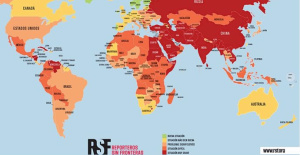 Spain moves from 36th to 30th place in RSF's world press freedom ranking but political pressure increases
Spain moves from 36th to 30th place in RSF's world press freedom ranking but political pressure increases Spain receives 16.1 million tourists until March and registers the best first quarter in history
Spain receives 16.1 million tourists until March and registers the best first quarter in history More than 2,000 arrested during pro-Palestinian protests at US universities
More than 2,000 arrested during pro-Palestinian protests at US universities Illa advocates for a "transversal" Government and Junts rules out agreeing with the socialists
Illa advocates for a "transversal" Government and Junts rules out agreeing with the socialists How Blockchain in being used to shape the future
How Blockchain in being used to shape the future Not just BTC and ETH: Here Are Some More Interesting Coins Worth Focusing on
Not just BTC and ETH: Here Are Some More Interesting Coins Worth Focusing on UPV students design an app that helps improve the ventilation of homes in the face of high temperatures
UPV students design an app that helps improve the ventilation of homes in the face of high temperatures Ivace and promotes a less invasive device for the early detection of prostate cancer
Ivace and promotes a less invasive device for the early detection of prostate cancer Valencia unanimously approves the ordinance to allocate spaces to test innovative initiatives
Valencia unanimously approves the ordinance to allocate spaces to test innovative initiatives UPV researchers promote a paid master's degree as a "talent factory" in integrated photonics
UPV researchers promote a paid master's degree as a "talent factory" in integrated photonics A million people demonstrate in France against Macron's pension reform
A million people demonstrate in France against Macron's pension reform Russia launches several missiles against "critical infrastructure" in the city of Zaporizhia
Russia launches several missiles against "critical infrastructure" in the city of Zaporizhia A "procession" remembers the dead of the Calabria shipwreck as bodies continue to wash up on the shore
A "procession" remembers the dead of the Calabria shipwreck as bodies continue to wash up on the shore Prison sentences handed down for three prominent Hong Kong pro-democracy activists
Prison sentences handed down for three prominent Hong Kong pro-democracy activists ETH continues to leave trading platforms, Ethereum balance on exchanges lowest in 3 years
ETH continues to leave trading platforms, Ethereum balance on exchanges lowest in 3 years Investors invest $450 million in Consensys, Ethereum incubator now valued at $7 billion
Investors invest $450 million in Consensys, Ethereum incubator now valued at $7 billion Alchemy Integrates Ethereum L2 Product Starknet to Enhance Web3 Scalability at a Price 100x Lower Than L1 Fees
Alchemy Integrates Ethereum L2 Product Starknet to Enhance Web3 Scalability at a Price 100x Lower Than L1 Fees Mining Report: Bitcoin's Electricity Consumption Declines by 25% in Q1 2022
Mining Report: Bitcoin's Electricity Consumption Declines by 25% in Q1 2022 Oil-to-Bitcoin Mining Firm Crusoe Energy Systems Raised $505 Million
Oil-to-Bitcoin Mining Firm Crusoe Energy Systems Raised $505 Million Microbt reveals the latest Bitcoin mining rigs -- Machines produce up to 126 TH/s with custom 5nm chip design
Microbt reveals the latest Bitcoin mining rigs -- Machines produce up to 126 TH/s with custom 5nm chip design Bitcoin's Mining Difficulty Hits a Lifetime High, With More Than 90% of BTC Supply Issued
Bitcoin's Mining Difficulty Hits a Lifetime High, With More Than 90% of BTC Supply Issued The Biggest Movers are Near, EOS, and RUNE during Friday's Selloff
The Biggest Movers are Near, EOS, and RUNE during Friday's Selloff Global Markets Spooked by a Hawkish Fed and Covid, Stocks and Crypto Gain After Musk Buys Twitter
Global Markets Spooked by a Hawkish Fed and Covid, Stocks and Crypto Gain After Musk Buys Twitter Bitso to offset carbon emissions from the Trading Platform's ERC20, ETH, and BTC Transactions
Bitso to offset carbon emissions from the Trading Platform's ERC20, ETH, and BTC Transactions Draftkings Announces 2022 College Hoops NFT Selection for March Madness
Draftkings Announces 2022 College Hoops NFT Selection for March Madness